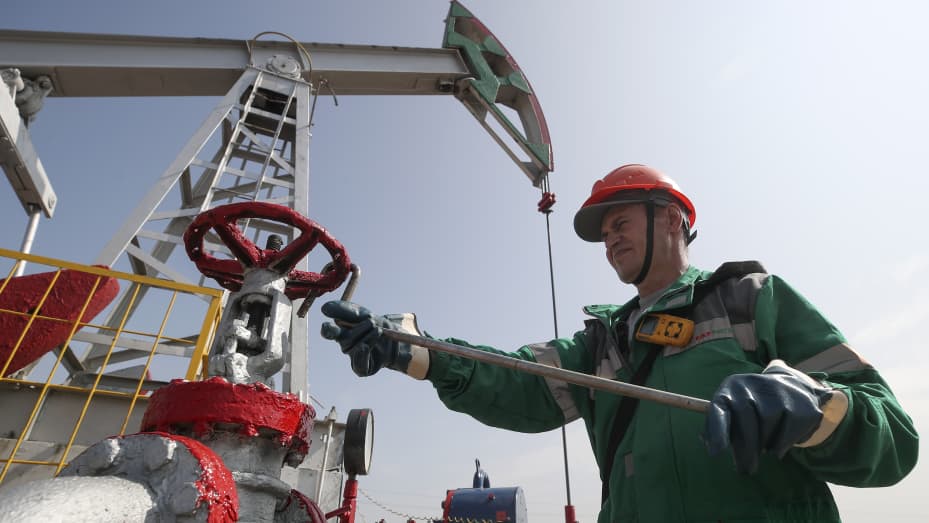 Back to the news list
Back to the news list
A group of some of the world’s most powerful oil producers agreed on Wednesday to a further planned increase in output, even as crude prices trade near record levels amid geopolitical tensions.
OPEC and non-OPEC partners, an influential energy alliance known as OPEC+, swiftly decided to green-light the return of 400,000 barrels per day for March. The move, widely expected by energy analysts, marks a continuation of the group’s strategy to gradually reopen the taps.

A worker in an oil field developed by Almetyevneft, an oil and gas production board (NGDU) of Tatneft
Helima Croft, head of global commodity strategy at RBC Capital Markets, told CNBC’s Brian Sullivan on Wednesday that OPEC+ was likely to stay the course for now. “I think they are still likely to proceed as planned with the 400,000 barrels per day monthly increase,” Croft said ahead of the meeting. “The problem is that they are not doing 400,000 barrels because of problems with Nigeria [and] Angola.”
Several OPEC members have struggled to meet the group’s monthly output increases in recent months.
In the event oil prices were to move materially higher – a move broadly expected by analysts on Wall Street – Croft said she would expect Saudi Arabia to cap any upside risk amid fears of faltering oil demand.
Led by OPEC kingpin Saudi Arabia and non-OPEC leader Russia, the energy alliance is in the process of unwinding record supply cuts of roughly 10 million barrels per day. The historic production cut was put in place in April 2020 to help the energy market recover after the coronavirus pandemic cratered demand for crude.
OPEC+ has faced pressure from top consumers such as the U.S. and India to pump more to reduce prices and aid the economic recovery. The group has resisted calls for speedier increases despite higher oil prices.

Russian energy minister Alexander Novak arrives for the 177th Organization Of Petroleum Exporting Countries (OPEC) meeting in Vienna, Austria, on December 5, 2019
Russian Energy Minister Alexander Novak has previously said the broader group does not wish to boost production levels too quickly as it remains wary of potential changes to demand.
International benchmark Brent crude futures settled 0.35% higher at $89.47 per barrel. The contract reached a seven-year high of $91.70 last week.
U.S. West Texas Intermediate futures, meanwhile, advanced 6 cents to settle at $88.26 per barrel. During the session the contract touched $89.72, the highest level since October 2014. OPEC alone accounts for around 40% of the world’s oil supply.
Demand destruction
Helima Croft, head of global commodity strategy at RBC Capital Markets, told CNBC’s Brian Sullivan on Wednesday that OPEC+ was likely to stay the course for now. “I think they are still likely to proceed as planned with the 400,000 barrels per day monthly increase,” Croft said ahead of the meeting. “The problem is that they are not doing 400,000 barrels because of problems with Nigeria [and] Angola.”
Several OPEC members have struggled to meet the group’s monthly output increases in recent months.
In the event oil prices were to move materially higher – a move broadly expected by analysts on Wall Street – Croft said she would expect Saudi Arabia to cap any upside risk amid fears of faltering oil demand.
Không thể sao chép